There are three primary types of swimming pools on the market: concrete (also known as gunite), fiberglass, and a vinyl liner. We've broken down the differences between these here, including varying cost factors.
If comparing the same size, steps, depth, etc. the typical order of most expensive to least expensive for these 3 pool types are as follows:
- Concrete (most expensive)
- Fiberglass (sometimes can't compete due to size restrictions)
- Vinyl (least expensive)
While some people have an instinctive assumption that they wouldn't be happy with a less-expensive option, with the heavy impact of the pandemic and inflation on every industry including pools, many families are looking for a cost-effective way to get the home pool they really want, instead of being limited by the higher cost of supplies. This has led more people to look at their options and vinyl pool sales have soared as a result of what they are finding.
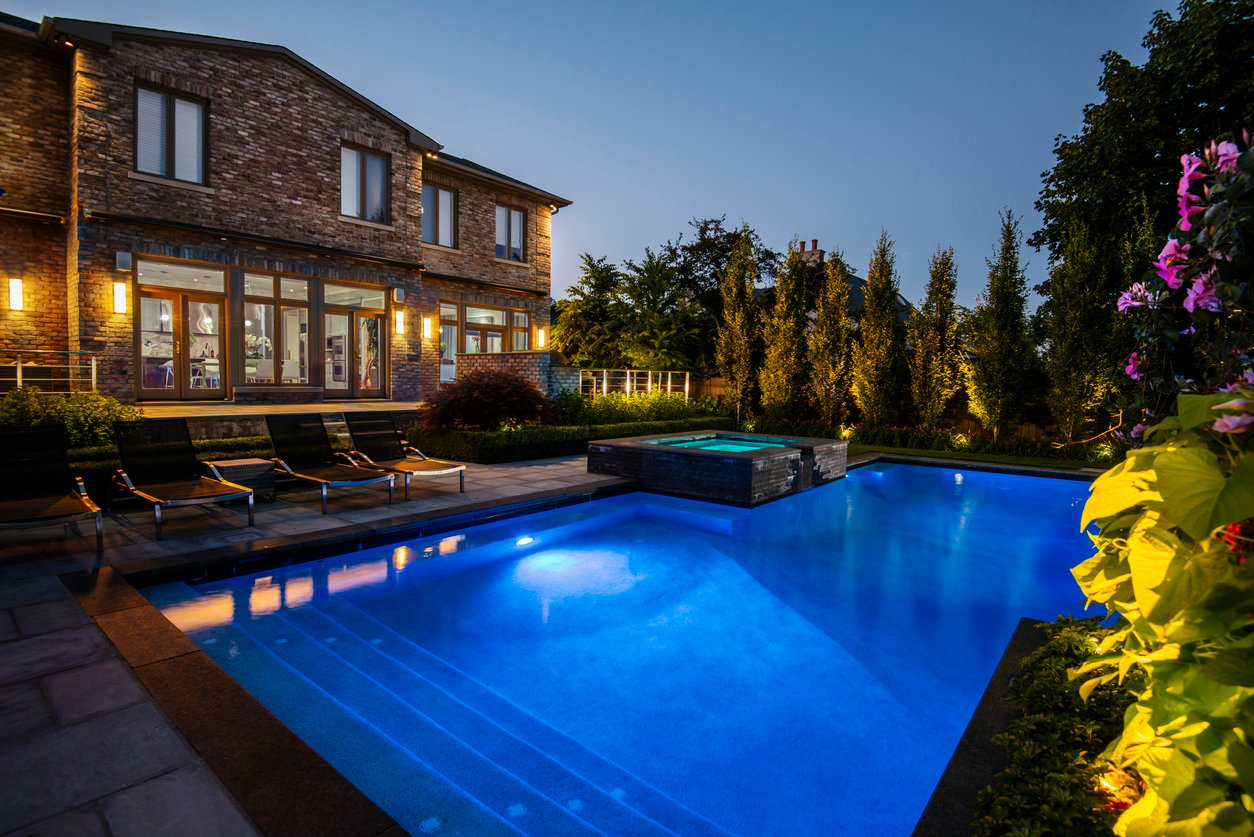
Today's vinyl pools are not what you may remember growing up with. These days, many experts can't tell the difference between a high-dollar concrete pool and a modestly priced vinyl liner pool from photos alone. Meaning, you can get the high-end look you've always dreamed about, with all the bells and whistles you've come to expect on concrete pools, in a way that fits your pocketbook, too. Here's what you need to know:
Pool Prices Increased Over the Pandemic
Due to Covid, prices for many supplies have increased substantially over the course of the last two years--including the supplies needed to build a swimming pool. Supply chain challenges have made it more difficult for businesses to bring in the materials they needed to even create the products not to mention keep them on the shelves.
Many pool companies--including ours--did not have enough supplies on hand initially to meet the steadily increasing demand as potential customers realized that they were going to be spending A LOT more time at home.

As a result, pool prices have skyrocketed over the past few years--and those are pricing changes that do not seem likely to come down any time soon. The timeline to put in new pools has also increased due to a higher demand for experienced builders, meaning installation prices have also gone up. Before you give up all hope for making your backyard dreams come true anytime soon, stick with us.
If you compare the price of a concrete pool to the price of a vinyl liner pool of the same shape, size, depth, etc., concrete pools have always been more costly. And unfortunately, thanks to the Covid-related cost increases, those prices are even higher now. Just the amount of concrete needed to complete the project alone can mean substantial increases, including a 3.6% increase in material costs during Covid. With concrete costs between $100.50 and $278 per sq. ft and the average residential swimming pool being 600 Sq. ft, you're talking upwards of $166,000 for just the concrete alone (not the pump, filter, other building materials, etc.). And that's before the pandemic inflation added another $6,000 for the same project (remember that 3.6% price increase we just mentioned).
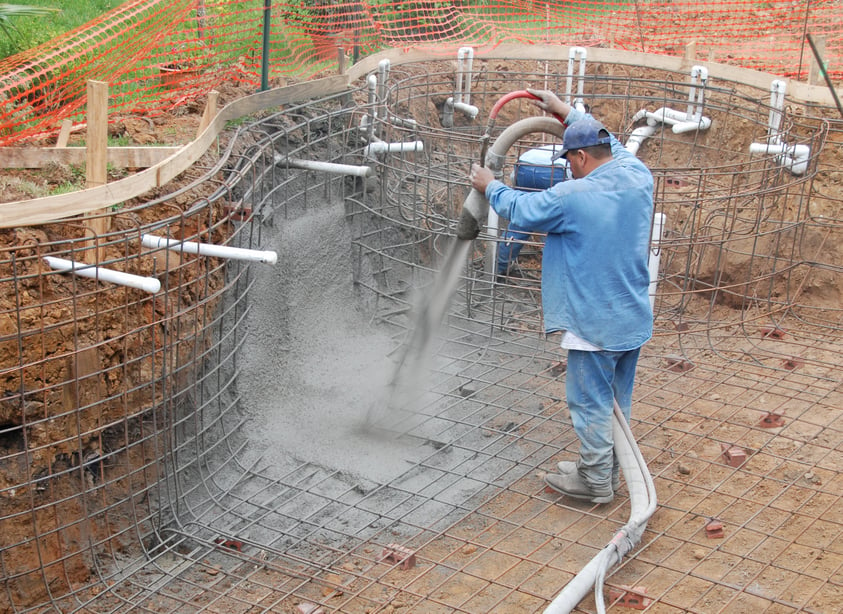
And while vinyl liner pools were no exception to increased materials cost, you can get A LOT more bang for your buck just due to how much less concrete you'll need for the job. And the "bang" in vinyl liner swimming pools has come a long way!
Improvements in Vinyl Liners
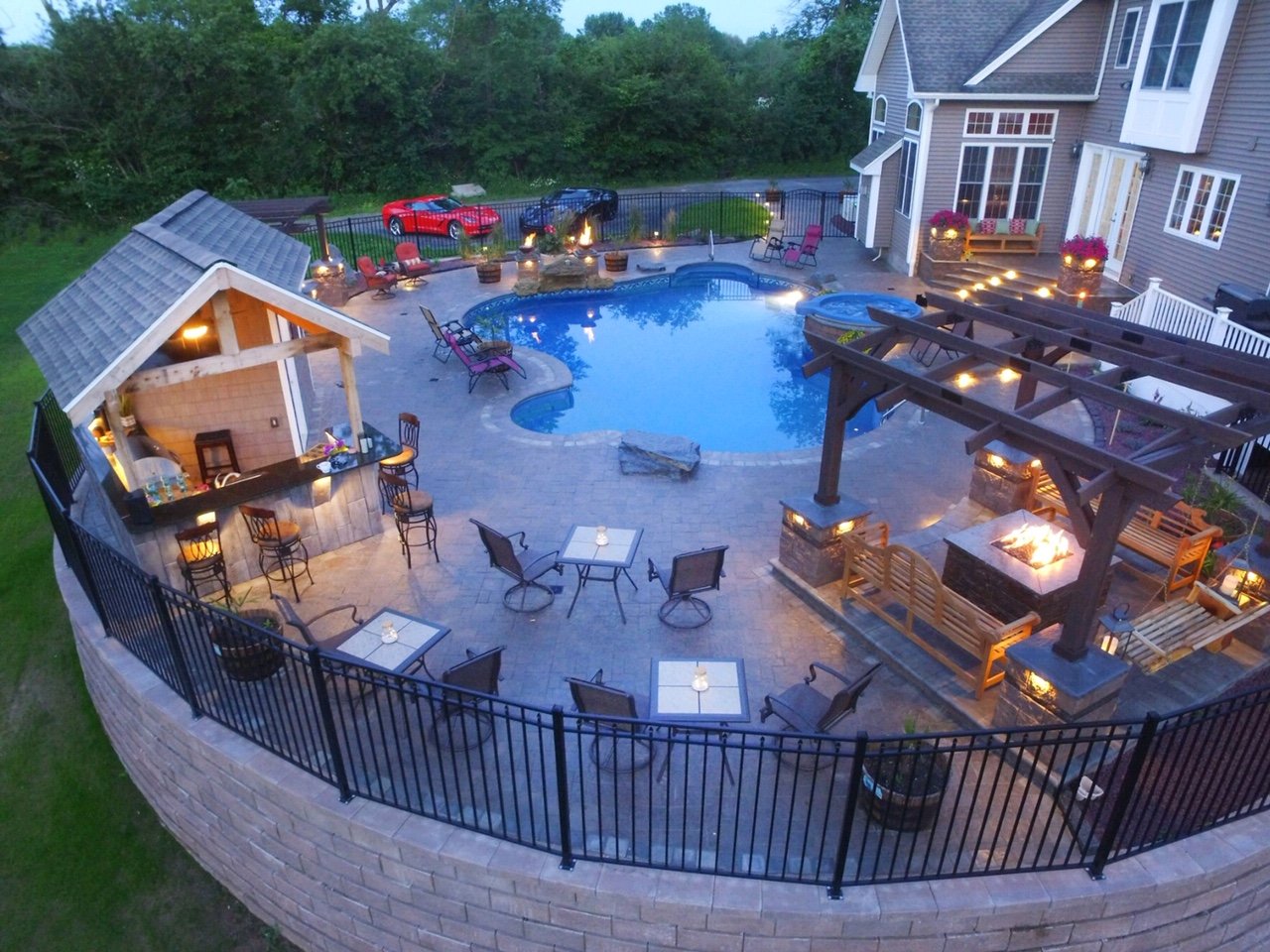
Historically, vinyl liner pools were considered the "budget" option for an inground pool. While they are still less expensive than other pool options (when comparing apples to apples), they are also much more attractive than pools you may remember from the 70s. Now, instead of drop-in steps, you can opt for beautiful full-width steps and a variety of high-end options.
- Deck jets
- Waterfalls and fire bowls
- Tanning ledges with bubblers
- Liner patterns in an array of designs, colors, and textures, with or without a border
Basically, if you can imagine it, you can likely create it--allowing you to have your dream pool at a much lower overall cost.
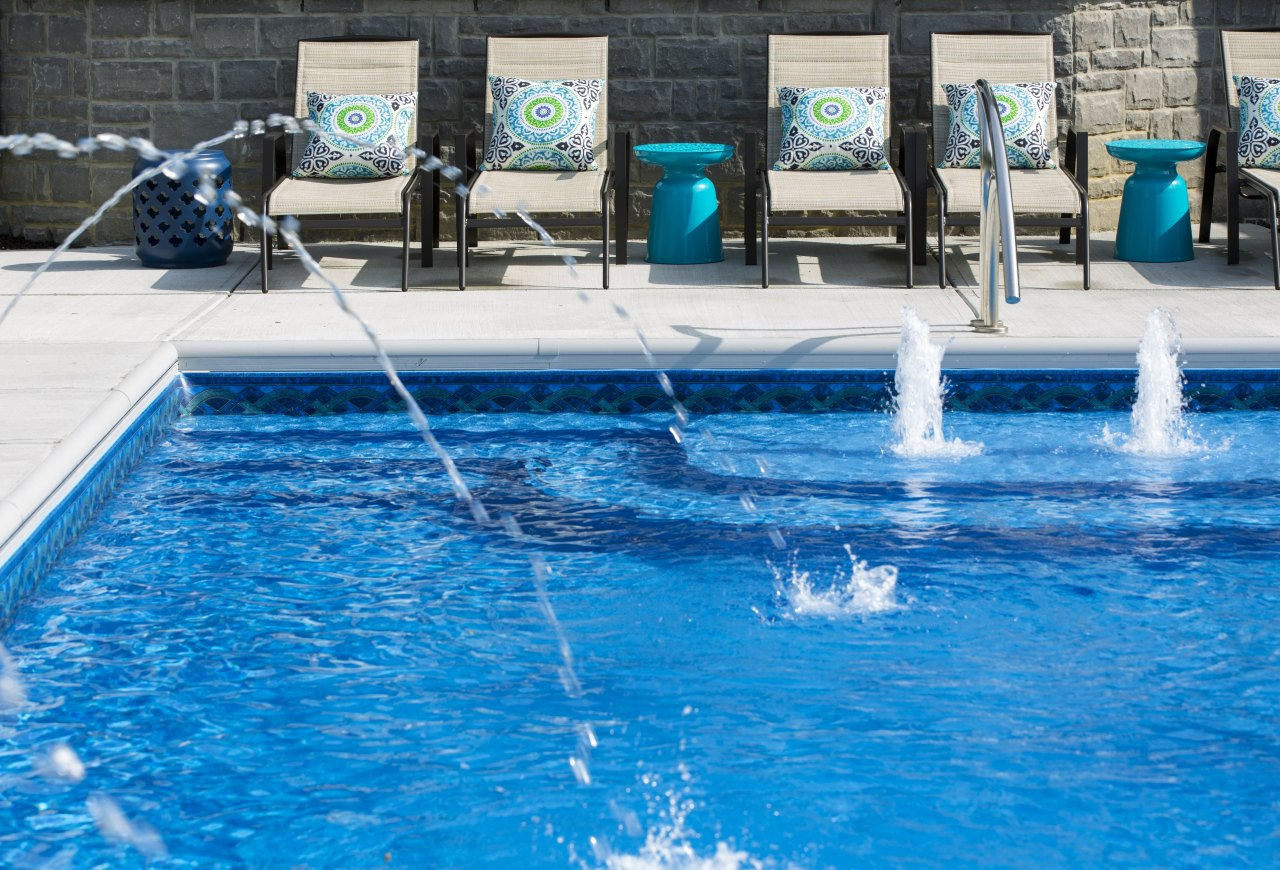
Top 3 Cost-Saving Advantages of Vinyl Liner Pools Most People Don't Think About
If you're considering installing a pool within the next few years, there are several advantages to choosing a vinyl pool over concrete or fiberglass. We've listed some of the biggest cost-saving advantages below but you can find a full run-through of the pros and cons for each pool type here.
1. Replacing a Liner is Much Less Costly Then Resurfacing Concrete or Fiberglass
I know, you're thinking I haven't even got my pool yet! Are we really going to talk about this? Yes. Because all pools eventually need to be either resurfaced (concrete and fiberglass) or have a new liner installed (vinyl). And taking those costs into consideration now can save you THOUSANDS down the road.
In the past, vinyl liners might have been the less durable swimming pool option. Modern vinyl liners, on the other hand, are extremely durable and can last as much as 7-10 years with proper water care. In many cases, they will also need less overall maintenance than another type of pool.
Eventually, of course, even the most durable vinyl liner will likely need to be replaced. Just like every concrete pool will eventually need to be resurfaced. Refinishing a concrete pool, on average, costs about $7,000 for every 1,000 square feet of concrete that you need to resurface. This is assuming that the 3.6 concrete inflation rate has subsided. Now compare this to the average cost of replacing an inground vinyl liner: $1,400-$4,800 depending on your pool's size.

Part of this is the cost of the material. Another deals with the ease of removing an old liner and replacing it which typically only takes 1-2 days. Versus resurfacing the much more difficult task of resurfacing concrete, which can take a builder 5-7 days.
Many homeowners even skip paying someone else to install their liner and opt to do it themselves. That's not an option with concrete pools but definitely a big money saver.
Vinyl is also less vulnerable to freeze/thaw cycles in colder areas.
If you're in an area that sees cold winters, you will find that vinyl offers another advantage: unlike concrete, it expands and shrinks less during those freezing/thawing cycles that occur throughout the winter. As a result, you will not have to worry as much about repairs on your pool, which can help keep maintenance costs lower over time. 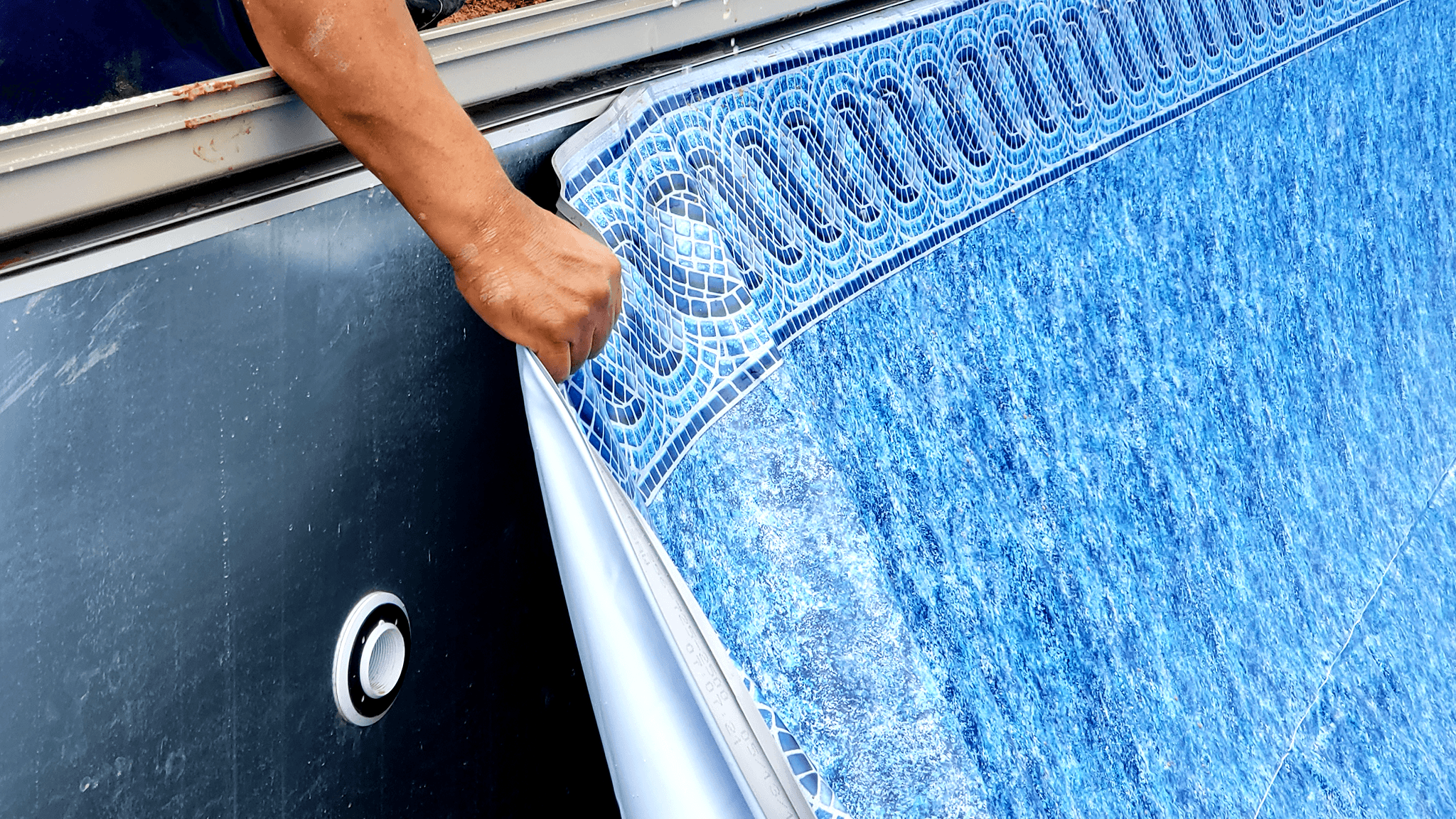
In general, you should plan to have a concrete pool resurfaced every ten years. However, depending on climate and chemical use, you may need to resurface your pool as often as every 7 to 10 years.
It's important to keep in mind that every 7-10 years, either concrete or vinyl pools will most likely require a facelift. This assumes that there's no excessive wear or tear, hard weather conditions, or poor chemical balance affecting the lifespan of either pool type. If you're concerned not just with the savings you get upfront but for the long haul, vinyl is a clear winner here.
2. Shorter Installation Time Means Big Savings
Not only can you save on the up-front cost of your pool kit, but when you choose vinyl over concrete or fiberglass you also save big bucks on the installation. Installing a fiberglass pool, for example, requires major equipment to lower the pool shell into the dug-out hole. This is can be the excavator used on the dig, but some have had to use a helicopter to get the job done.
Installing a concrete pool means substantial material costs and roughly two months working with (and paying for) a construction crew. With vinyl, on the other hand, you can complete much of the installation process yourself--or even go entirely the DIY route if you want. But even if you go the more traditional route of hiring an amazing builder in your area, vinyl liner pools cost much less to install for a couple of reasons but mainly based on the time it takes to complete the project.
.jpeg?width=3024&name=WON%20Katie%20Journey%20%20(2).jpeg)
BUILD YOUR OWN SWIMMING POOL & SAVE MONEY
We mentioned in the last section that replacing an old liner takes much less time than resurfacing concrete or fiberglass. The same is true with the installation. And the less time a builder has to spend on the job site, the less it's going to end up costing you.
On average, concrete pools take 7-10 weeks to install, cure and finish.
Whereas, a fiberglass pool takes 2-4 weeks to install.
And vinyl swimming pools only take 1-2 weeks, start to finish.
Outside of potentially waiting much longer than anticipated before you and your family can cannonball into your new pool, those extra weeks being billed for your installation team's time really add up fast.
.jpeg?width=2048&name=0%20(12).jpeg)
While you may still find yourself waiting for critical materials thanks to Covid supply issues or dealing with possible construction delays like weather (no one can reschedule rain), vinyl pools go up faster and more efficiently than any other inground pool type. This means you'll be able to enjoy it sooner and not have to pay for several more weeks of man-hours invested in the process. This equals significant cost savings.
3. Vinyl Pools Don't Absorb Your Chemicals Like Concrete Pools
Ultimately, vinyl requires less maintenance--and less expensive maintenance--than the average concrete pool. Which sounds odd, right? But it's because concrete pools are porous, so they need a higher amount of the chemicals you use to keep the pool clean. That means:
- Regular chlorine addition (an estimated 2 tablets for every 10,000 gallons, per week)
- Pool shock (an estimated 1 bag for every 10,000 gallons, which you may have to apply weekly or monthly)
- Algaecide
- Specialty PH balancers and cleaning chemicals
You can avoid many of these expensive chemicals by utilizing a mineral system such as Pool Frog with E-Z Pool water treatment. Which is another great money-saving advantage for any type of pool. But vinyl tends to grow less algae in general, due to its non-porous nature.
Vinyl also tends to remain more balanced than a concrete pool since the chemicals will be less likely to leech into the surface of the pool. If you want to avoid excessive chemicals, which can be ideal for families with sensitive skin and sensitive wallets, you will find that a vinyl pool is a more logical choice for your needs.
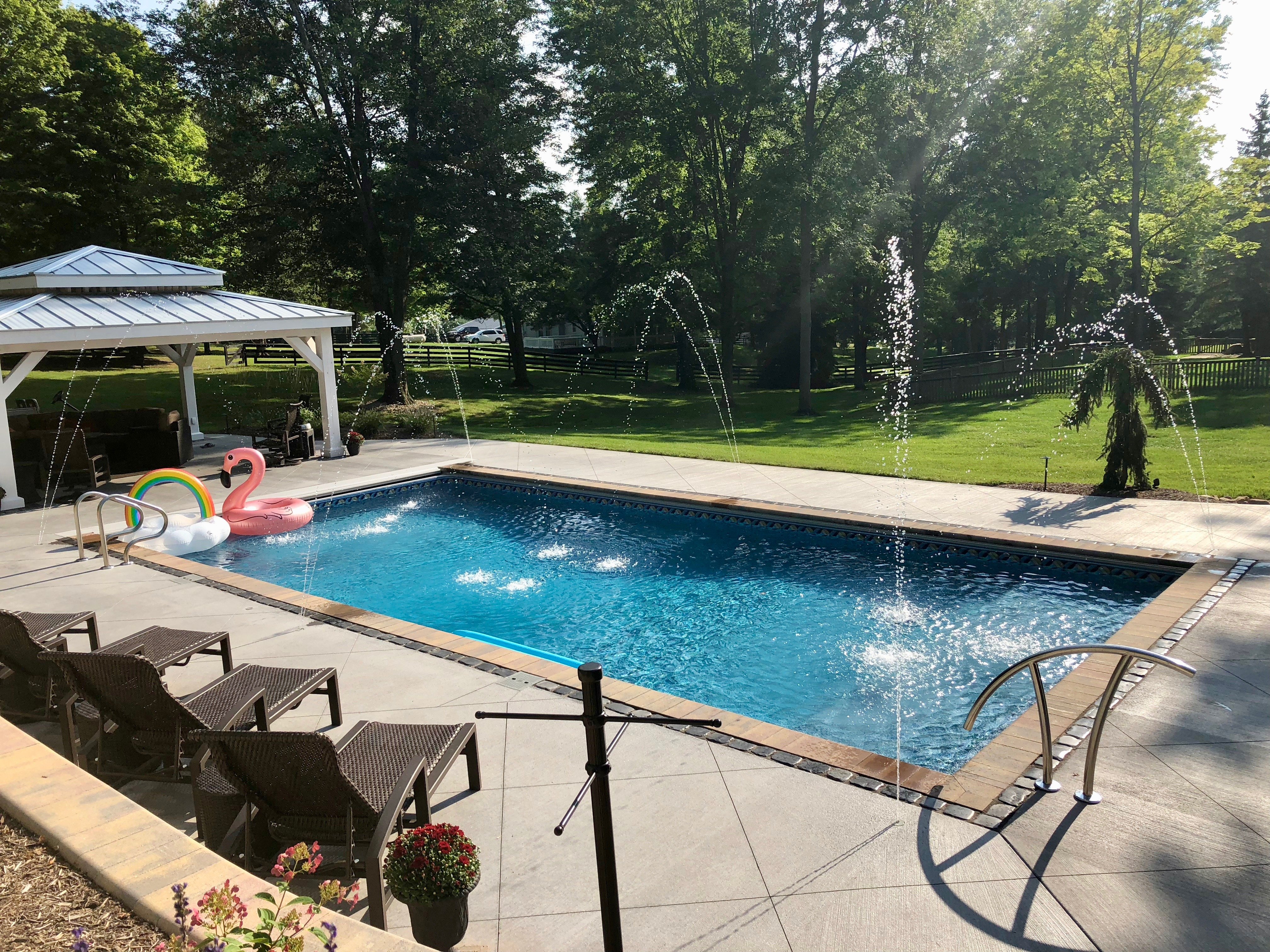
Conclusion
If you are considering adding a swimming pool to your home and want to make sure you don't break that bank, or you simply want to invest your money more wisely, a vinyl liner pool is a perfect option. They have come a long way in terms of design and can offer you the same or even better look for less than the other pool types of the same design.
On top of the initial savings and quicker install time, you'll find yourself dealing with less maintenance issues and higher long-term care costs. Which means more time and money for other goals in your life.
Of course, you'll also save on the upfront cost of your pool kit. Our award-winning pool kit designer allows you to see exactly how much everything in your kit is, including the total price. We do not gate-keep our prices. Start designing your dream pool, even if it's just for fun, using the link below. Or check our most popular configurations in our click-to-buy complete pool kit designs like our Oxford rectangle pool here or our Venetian L-shaped pool here.
If you've been dreaming of lounging by the pool summer after summer, vinyl pools could be the perfect chance to make that dream reality. Reach out to us with your questions at (866-532-8194) or sales@royalswimmingpools.com today!
Want more money-saving tips for your pool? Continue diving into the related articles below.


-1.jpeg?width=843&name=WON%20Joe%20LoPiccolo%201%20(review%20included)-1.jpeg)

.jpg?width=700&name=pool%20essentials%20POOL%20LINERS%20(option%202).jpg)


